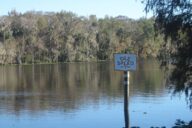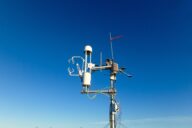Lake Erie forecasted for algae relief in 2012
Researchers expect a smaller, thinner algal bloom on Lake Erie this year due to unusual spring weather than last year.
Researchers expect a smaller, thinner algal bloom on Lake Erie this year due to unusual spring weather than last year.
Ohio governor John Kasich will sign a revised version of a bill that will regulate Lake Erie water withdrawals by industries. Kasich vetoed the bill earlier this year because withdrawal[…]
Recent studies by NOAA and the University of Michigan show that Lake Erie’s thermocline depth and lake circulation are the opposite of most lakes.
The Ohio Division of Wildlife’s Castalia Fish Hatchery near Lake Erie recently expanded from 1,440 to 12,000 square feet, allowing them to raise more steelhead trout for local rivers and[…]
 Monitoring New Hampshire’s Aquatic Ecosystems: Continuous Data Collection in the Lamprey River WatershedJune 30, 2025
Monitoring New Hampshire’s Aquatic Ecosystems: Continuous Data Collection in the Lamprey River WatershedJune 30, 2025 Research Brief: Evaluating the Efficacy of No-Wake Zone PoliciesJune 30, 2025
Research Brief: Evaluating the Efficacy of No-Wake Zone PoliciesJune 30, 2025 Research Brief: Measuring Lake Superior Evaporation with an Eddy Covariance System at Stannard Rock LighthouseJune 23, 2025
Research Brief: Measuring Lake Superior Evaporation with an Eddy Covariance System at Stannard Rock LighthouseJune 23, 2025 Wave-Powered Buoy Deployed in Puget SoundJune 23, 2025
Wave-Powered Buoy Deployed in Puget SoundJune 23, 2025 Long-Term Monitoring in the Chautauqua Lake WatershedJune 18, 2025
Long-Term Monitoring in the Chautauqua Lake WatershedJune 18, 2025


